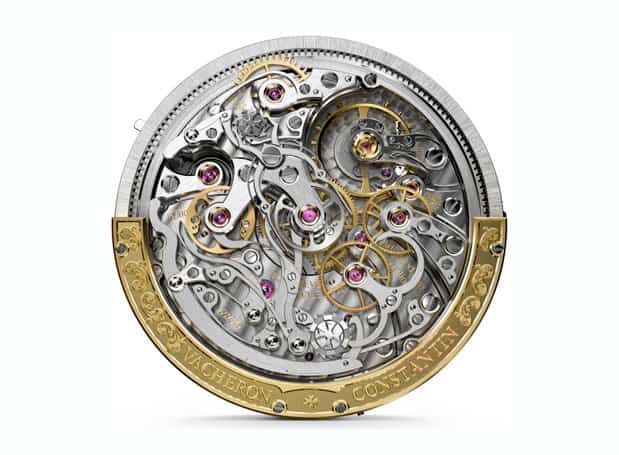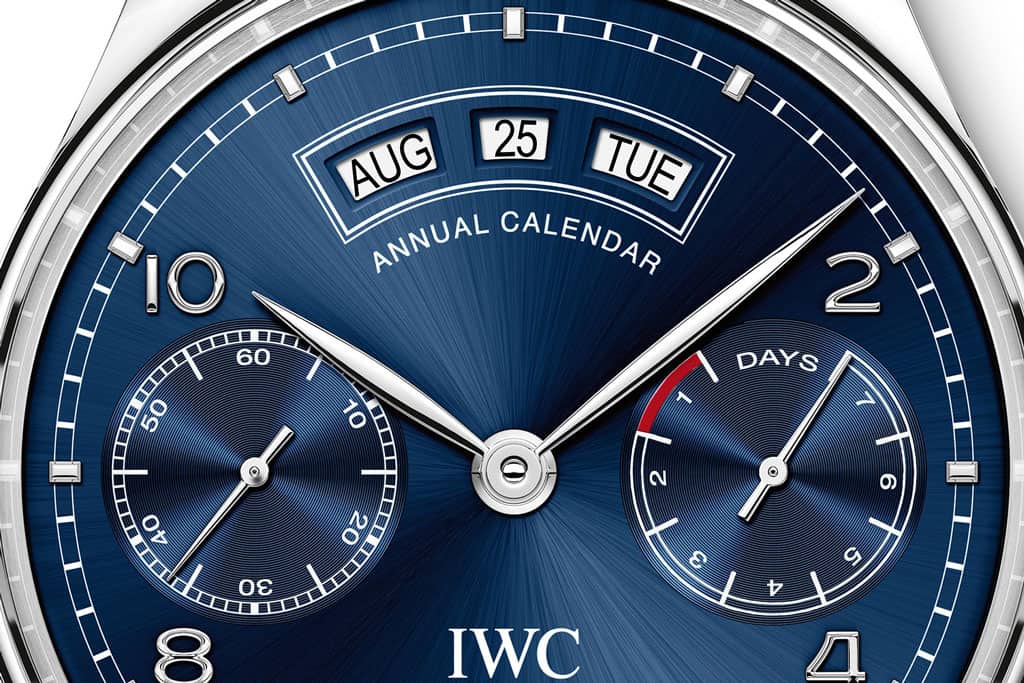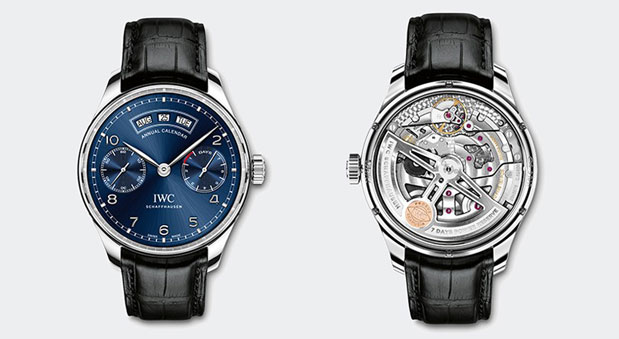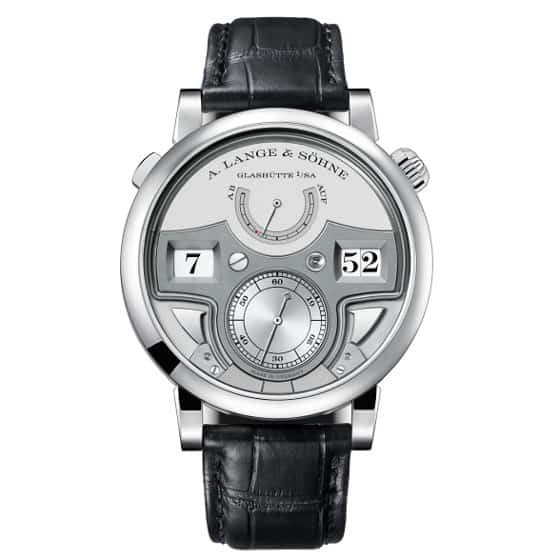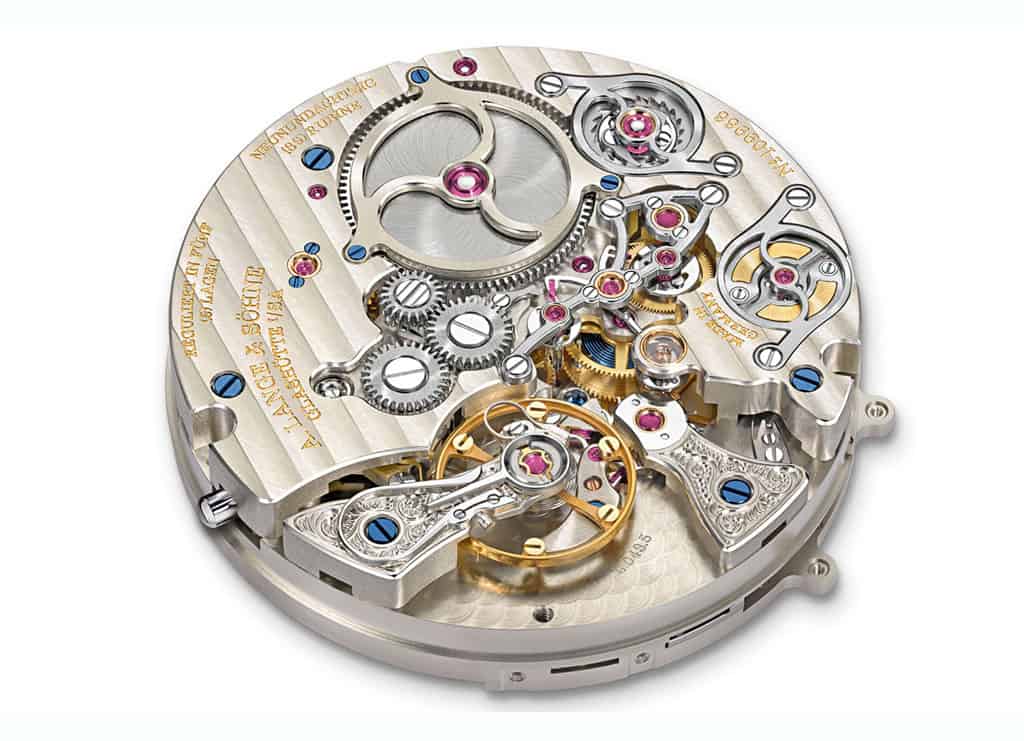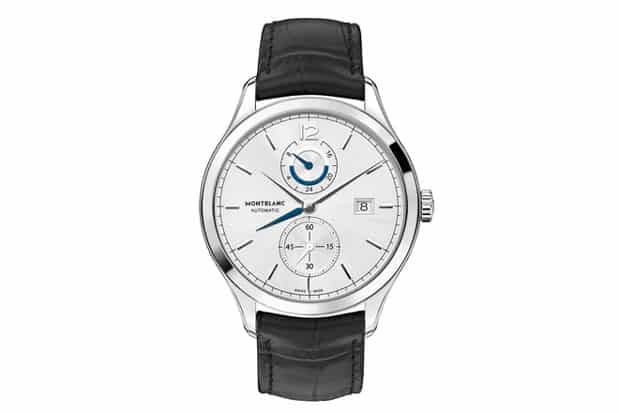Like many of you, I’ve been sitting here in the states this week living vicariously through our colleagues who are in Geneva, looking at some of the most absurdly decadent timepieces to come out in 2015. SIHH is where many high-luxury brands, namely those under the Richemont umbrella, flaunt their new creations, delighting the thin slice of collectors who can obtain them, and igniting the dreams of those of us who can’t. After all, one must plan for the “what-ifs”… what if you win the lottery? what if your child becomes a star athlete (I’m assuming you’d know by now if you were going to)? what if you bump your head on the bathroom sink and realize the flux-capacitor is a viable time travel machine?… Well, you’ll have to buy some watches with your earnings.
But in all seriousness, as the watch-enthusiasts I know we are, there is a lot to appreciate in the design, craftsmanship, technology and sheer horology that comes out of SIHH. This is watchmaking on a different level from what is typically in the w&w price range. Watches with cases that are finished like jewelry and movements that take years to develop and the hands of master watch makers to execute. As such, we owe it to ourselves to know about and appreciate them… It also gives me a rare excuse to write about them. So, here are a few pieces from this year’s SIHH that caught my eye.
Vacheron Constantin Harmony Ultra-Thin Grande Complication Chronograph
Might as well start big with the Vacheron Constantin Harmony Ultra-Thin Grande Complication Chronograph. Part of their new Harmony line, this epic work is limited to a mere 10 pieces in platinum. The first thing that struck me about this is that despite being a Grande Complication, and despite being the most limited watch they unveiled this year, it’s surprisingly reserved. In fact, on the surface, it’s a classic chronograph with perfectly executed vintage design… A design that would make the watch regardless of the price or the movement. The new cushion case, which is based on a design from 1928, is elegant and fluid, with perfect proportions at 42 x 52 x 8.4mm making it thin, formal, yet pleasantly masculine.
The silvered dial is true early-twentieth century chrono with blue and black indexes for the time and chronograph functions encircled by a red tachymeter. The sub-dial functions are cleverly indicated by the hand color, the steel on the 9 o’clock dial indicating active seconds, the blue at 3 indicates it’s a 60-minute counter, tied to the chronograph. At 6 is a power reserve for the 52-hour movement.
But within lies a beast of a movement, earning it the Grande Complication title. This ultra-thin automatic split-seconds chrono is based on their new 459-part Cal. 3500. As you can see from the image, it’s remarkably complex and impeccably finished movement, made all the more complex by being 5.2mm thin, which requires insane tolerances, and earns it a world-record for an automatic split-seconds. Looking in, there are beautiful details abound, like the two column wheels that standout amongst the baffling mechanical inner-workings by being marked with VC’s signature maltese cross logo. Looking at first, you might think I made an error by calling it an automatic, and then your eyes will see the gold crescent on the edge of the movement. This is a peripheral rotor, that rides around a geared track encircling the movement, logically decreasing thickness, while also allowing for a better view.
As far as the price goes… well, that’s the one detail that seems to be left out.
IWC Annual Calendar ref. 5035
I debated not including this one as it lacks a bit of a wow factor, but I happen to really like it…well partially really like it. Part of the Portuguese family, the newly developed Annual calendar takes most of its design cues from the already existing automatic, with a classic, stately design and handsome, albeit oversized, case (the part I don’t like) at 44.2 x 15.3mm. The new model also keeps the 9 o’clock seconds, and massive 7-day power reserve, being based on the same movement. The complication from which it takes its name adds a new level of functionality to the auto, but not as much as their perpetual calendars, making this a middle tier option.
But what really makes this one for me is the simple execution of the calendar functions. Sitting just below twelve is an arc ranging from 11 to 1, with three windows reading month, date and day. And that’s it. No extraneous windows or hands. No overly complex readouts. Just three windows in a line, displaying the date in a logical and easy to read fashion. And since it’s an annual calendar, it takes into account the differing lengths of the months, acting as a reliable reference, so long as it’s kept wound. To be honest, this is the first of the modern Portuguese to really grab my attention, and though it’s for a single detail, I’m quite into it.
Get yours today for a mere $24,100 in steel or $35,700 in 18k rose gold.
Piaget Altiplano Flyback Chronograph
I have a weird and almost unfortunate soft-spot for Piaget. I just find their non-jeweled watches so understated and refined. The Altiplano 3-hand automatic with 4 o’clock sub-seconds and ultra-thin movement in white gold might my dream dress watch… that and their almost stubborn pursuit of thin movements is endearing. Other brands are focused on all sorts of fancy wizardry, but Piaget’s focus is more singular. I can just appreciate that.
And it’s in that pursuit that their new, record holding chronograph has come to be. Holding the title for “thinnest hand-wound flyback chronograph in the world”, the movement comes in at a lithe 4.65mm, while the watch as a whole measures 8.24mm. Just consider for a second that this is a column wheel chronograph with flyback function… and one with a second time zone tracked via the 9 o’clock sub-dial, and that feat becomes all the more impressive. That said, it makes Vacheron’s achievement with the previously mentioned watch all the more impressive, as that is less than 1mm thicker.
Naturally, the movement is gorgeous too. There is a main large plate with circular Cote de Geneve, through which one can make out certain critical parts, namely the column wheel and balance. Staying true to the Altiplano series, it has a remarkably understated, graphic dial. No applied indexes or guilloche, just thin black lines and numerals. It could almost (and I’m sure has) be called too plain, but there is something to be appreciated about a dial that belies the complexity of what’s within. Regardless, it’s very well balanced and clean, and would look mean with a suit. Starting prices appear to be at the $29,000 mark.
A. Lange & Söhne Zeitwerk Repeater
I’ll start this one off by saying that the Zeitwerk is my dream watch. Though my collection bares no resemblance to this horological beast (not sure how it could) and I’m more likely to travel to the Moon than buy one in the foreseeable future (say 1,000 years), it is just the pinnacle of watchmaking in my eyes. It’s the perfect mixture of modern concepts and technology with classical techniques and a unique and tasteful aesthetic. The digital, jumping read-out mixed with the massive sub-seconds and power reserve, on a dial that is more viewing into a machine than an aesthetic skin… it’s all just right. The movement too is miraculous, it’s decorated to the nines, composed of hundreds of parts, and employs multiple patented components including a constant force escapement.
Well, they went and made it vastly more complex and impressive by integrating a minute repeater into the new version. For those unfamiliar, a minute repeater is a mechanism that chimes the time. Typically, one pulls a sliding lever on the side of a case, which puts power into the repeater system, and then it chimes out the hours in one tone or rhythm, quarter hour in another, and then the minutes in a last. The Zeitwerk also rings, but does so in a different and more functional manner. First, you push a button, and it pulls the energy from the barrels. To prevent it from over pulling, there is a point in the power reserve, indicated by a red dot on the dial, below which it wont function, another patent. Then, instead of being a quarter repeater, it’s a decimal repeater. A low tone for the hour, a double tone for the ten-digit and a high tone for the minutes. To show off a bit, they also moved the gongs, which are bent rods, and the hammers to the dial itself, putting on a little show every time it’s actuated. see it in action here
Granted, one of the draws of the Zeitwerk is how clearly the time is already indicated, so a repeater, which is never practical, is all the more redundant, but this is clearly not about that. It’s about pushing their abilities and showing off what they can do. And in those terms, they certainly achieved their goal. Naturally, the Zeitwerk Minute Repeater is available only in platinum, and runs a cool $500,000… I think I’ll keep my dreams to the standard version for now.
Montblanc Heritage Chronométrie Dual Time
Now that we’ve crossed the six-figure mark, let’s come back down to Earth with a watch that is surprisingly affordable for SIHH standards, the Montblanc Heritage Chronométrie Dual Time. With a starting price in steel of a $4,650, one could imagine these going second hand for something far more reasonable. And that is great, because this watch is gorgeous, and a bit surprising. Montblanc has been sharpening their horological chops over the last few years, but I didn’t expect to see them try to make something more accessible…at least not while being interesting.
Starting with the looks, the word that comes to mind is sharp. It’s clean, cold and steely (I don’t have to remind you I am a fan of gray), with a clever touch of color in the form of blued steel. It’s modern, but not too contemporary, with a hint of mid-century elements. Angular applied polished markers sit atop a radially brushed silver dial, while black printed lines add detail and legibility. What get’s me is the perfect proportioning and slick little graphic details…the way the quarter minute marks on the sub-seconds cross the outer line, the way the 12 marker integrates into the 24hr dial as well as the main dial, the use of blue to separate out functions and indicate PM. Top this off with razor-like hands and you have a stern, but timeless design.
But, this isn’t just an attractive watch, it’s a functional one, with an in-house dual time module on top of a Selitta automatic. The steel hands, 24-hr hand and date are used for local time, while the blue hand is used to indicate home time when abroad. Since this hand is also on a 12-hr cycle, it can be hidden under the steel hand when home for a simpler display. The local hour hand can also be jumped one hour at a time when passing into other timezones via the crown.
As Jason over at Professional Watches points out, the movement layout bears a striking resemblance to that of the Jaeger-LeCoultre Master Hometime, which is also a Richemont brand, perhaps indicating some cross pollination. The case also has some resemblance to the Baume and Mercier Clifton, also coming in at a thin 41mm, perhaps building off of that watch’s success, but at a higher price point. Either way, it has looks that I’d be happy to see on my wrist and functionality I’d be interested in using.









 Featured Videos
Featured Videos




